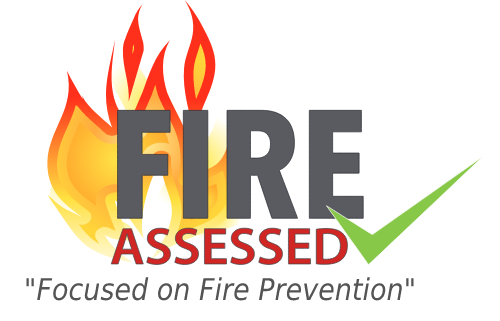Fire Risk Assessments
Fire Risk Assessments
 As the responsible person you must carry out and regularly review a fire risk assessment of the premises. This will identify what you need to do to prevent fire and keep people safe.
As the responsible person you must carry out and regularly review a fire risk assessment of the premises. This will identify what you need to do to prevent fire and keep people safe.
You must keep a written record of your fire risk assessment if your business has 5 or more people.
When these Regulations came into force there is now a requirement for all employers to:
• Carry out a fire risk assessment of the workplace taking into consideration all employees and all other people who may be affected by a fire in the workplace, and to make adequate provision for any disabled people with special needs who use or may be present in the premises;
• Identify the significant findings of the risk assessment and the details of anyone who might be especially at risk in case of fire. If more than five people are employed or the premises are licensed it is a requirement that these significant findings are recorded; (However, the best evidence of compliance as well as best practice that a written record is produced on all occasions to assist with the process of ongoing reviews)
• Provide and maintain such fire precautions as are necessary to safeguard those who use the workplace; and
• Provide information, instruction, and training to employees about the fire precautions in the workplace
By ‘responsible person’, the RRFSO means anyone who has any degree of control over the premises, which can include, inter alia, the employer, owner, occupier, or managing agent.

The 4 Types Of Risk Assessment
Type 1 Risk Assessment
Type 2 Risk Assessment
Type 3 Risk Assessment
Type 4 Risk Assessment
As with the Type 3 assessment, access to flats can be difficult and the destructive nature of the assessment will involve a contractor to open up and repair damage after the inspection.
Are Type 2 or 4 Fire Risk Assessments Needed?
A risk assessment is a process of identifying hazards, evaluating risks, and controlling or eliminating those hazards during daily tasks and activities.
This also involves applying control measures to make sure your people and any visitors to your site are safe. Ultimately, you have to decide what might cause harm to people and take reasonable steps to prevent that harm.
If you employ over five people, you must keep a written record of all of your assessments. If you don’t? You could face a fine or even prosecution.
We should all be aware that Fire Risk Assessments are legally required but did you know that there are different types of risk assessment that can be carried in blocks of flats?
The current guidance endorsed by the National Fire Chiefs Council (NFCC) ‘Fire Safety in Purpose Built Blocks of Flats’, issued by the Local Government Association in 2012, identifies 4 types of Fire Risk Assessments; some of which are destructive.
The Regulatory Reform (Fire Safety) Order 2005 (RRO) states that a Fire Risk Assessment (FRA) is required in almost all buildings, however, does not go into specific detail about how intrusive or destructive this should be.
Happy Compliant Customers Is Our Goal
Howard and Katie Thompson - Markington Cottages
“Dear Steve, thank you for doing our Fire Risk assessments.
Steve was very flexible and accommodating in order to fit us in during a change-over day.
Very helpful and made some good suggestions. All of this was followed up very quickly in a full report which we are able to work through in a timely manner.
It goes without saying that we would highly recommend Steve at Fire Assessed”.
Stuart Warner - PMR
“Dear Steve
Thank you very much for your fire safety survey at PMR’s office in Haverfordwest. Following your survey, PMR commissioned remedial work on the building to bring the electrics and alarm system up to standard.
PMR has asked me to thank you for your work and, in particular, for your clearly laid out report which provided a spec for the electricians. Prior to your visit, PMR staff had no idea that the building was not compliant. They are very grateful for your help in bringing about safer working conditions.
Hilary & Martyn Brookes - Beach View Cottages
“Steve from Fire Assessed Ltd has carried out several Fire Risk Assessments for us in our holiday lets and residential long-term let. Communication with Steve is easy. Which really does help the whole process go more smoothly.
He’s friendly, efficient, and very good at explaining things. We definitely recommend Fire Assessed Ltd.
Thank you Steve for making a daunting process as easy as possible“.
Book An Assessment
Enter your details below and we will get back to you shortly.

